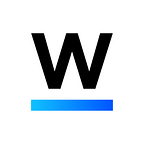Focusing on Asia Healthcare Market
QTUM team visited Korea on 8/18. QTUM introduced its second test network Skynet during the Meetup at Seoul D.Camp. For business cooperation, QTUM team met Coinone, one of the three largest Crypto-currency exchanges in Korea, The Loop in charge of ICON, inter-chain project that connects blockchain networks, and MediBloc, QTUM’s first healthcare DApp.
QTUM Homepage: https://qtum.org/
QTUM, with the advantages of Bitcoin and Ethereum, successfully raised $15.6MM from ICO
QTUM implements Ethereum Virtual Machine (EVM) on Bitcoin platform, and thus, provides compatibility for Bitcoin and Ethereum. Bitcoin has proven to be a working crypto-currency for the past 9 years that has widely penetrated into existing markets, and Ethereum has gained explosive popularity within blockchain technicians. On top of incorporating the benefits of Bitcoin and Ethereum, QTUM has chosen proof-of-stake (PoS) consensus algorithm rather than proof-of-work (PoW) so that it sponsors speedy network and agile expansion.
QTUM raised total of $15.6MM from its Initial Coin Offering in March 2017. ICO ran for 117 hours. More than 7000 transactions from over 20 different countries amounted to this total ICO number. This amount had been the fourth largest crowd funding record in crypto-currency field at the time. The crypto-currencies received during this ICO in today’s terms (10/16/2017) amount to over $87MM.
QTUM has opened “mainnet” to the public on September 13th in Shanghai. It will put its utmost effort in publicizing the excellence of QTUM to the world.
Why there is a hype on QTUM
The common issue with existing public blockchain platforms such as Bitcoin and Ethereum is their performance. Ethereum is viewed as the almighty platform where any DApp can be executed. However, significant limitations still exist at current stage, and thus, many updates are planned for upgrade. One of these updates is to change its consensus algorithm from PoW to PoS. However, QTUM from the onset has incorporated PoS consensus algorithm which will eliminate unnecessary consumption of computing resource and support better performance and scalability.
Also, Ethereum limits the programming language for smart contract to “Solidity” whereas QTUM supports various other programming languages as well. QTUM’s biggest strength is that it embraces the benefits of both Bitcoin and Ethereum and also supports various programming language compatibility.
QTUM is truly decentralized
It employs Decentralized Governance Protocol (DGP) to have the voice of all participants heard. QTUM is designed in a way important agenda on token will be determined by the participant votes. Voting rights are allocated based on the number of tokens in ownership, and thus, every token holder’s opinion can be reflected in the network.
Synergy is expected from QTUM’s partnership with MediBloc
MediBloc is the first healthcare DApp on QTUM blockchain. MediBloc team and QTUM team met for the first time during the New York “Consensus” event in May and shared their visions and progress on their projects. MediBloc team that began preparing its DApp on Ethereum started building relationship with the QTUM team and discussed the possibility of developing MediBloc on QTUM. QTUM had already planned to support EVM which enables Ethereum-based DApp to easily move onto QTUM platform. In July during QTUM’s test net launching event in Shanghai, MediBloc was officially introduced as DApp based on QTUM platform.
QTUM team visited Korea and discussed with MediBloc team on technical aspects of the development and the timeline of future milestones. MediBloc confirmed with QTUM its goal and vision, and thus, its confidence in QTUM platform solidified. MediBloc decided to continue developing its ecosystem based on QTUM platform.
MediBloc brings the paradigm change to PHR market
MediBloc is a personal healthcare record platform based on blockchain. MediBloc’s co-founders have worked as professional doctors where they formed their vision to connect the global medical data under one platform. In order to establish a new global medical data paradigm, building the platform on technologically advanced blockchain like QTUM is a must.
China and Korea rank #1 and #2 as Crypto-currency markets. MediBloc dreams global platform.
China is receiving the most highlights from crypto-currency investors. China’s blockchain market has the largest impact on the global blockchain industry. Crypto investors during the first half of 2017 purchased $40MM worth of new crypto-currencies issued in China.
Korea is one of the three largest blockchain markets with China and the US. Korean investors already hold 40% of the total Ethereum tokens, and thus, have significant influence in the crypto-currency world. Many investors in Korea have already invested in QTUM as QTUM is listed on one of the Korean exchanges. More exchanges are planning to list QTUM in near future.
MediBloc is targeting China and Korea as the entry markets, #1 and #2 crypto-currency markets in the world. Basing MediBloc on QTUM will bring down the entry barrier for investors especially from China and Korea.
